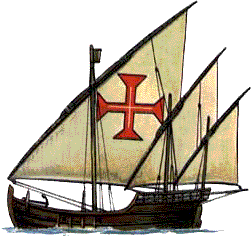 The Mali Empire (1230-1400s) was an empire in West Africa. It stood roughly where Senegal and Mali are today. At its height in the 1300s it was one of the richest in the world and had one of the greatest seats of learning of its time, Timbuktu.
The Mali Empire (1230-1400s) was an empire in West Africa. It stood roughly where Senegal and Mali are today. At its height in the 1300s it was one of the richest in the world and had one of the greatest seats of learning of its time, Timbuktu.
Mali came after the Ghana Empire, on whose remains it was built, but before the Songhay Empire, which took it over bit by bit.
The empire stretched across the grasslands south of the Sahara along the Niger and Senegal rivers. In those days the land was not so dry and trade went by land not by sea, so twice as many people lived there back then. The main sign that times used to be different are the huge mosques that the empire left behind.

Size: In the early 1400s the Mali Empire had about as much land and as many people as America did east of the Mississippi River in 1880. Timbuktu in those days was bigger than London, and it was not even the capital!
Making a living: Most people were farmers. They grew rice, beans, sorghum, millet, peanuts, papaya and cotton. Some people were slaves. Herdsmen raised cows, goats and sheep. Its smiths worked copper, iron and gold. To the north were salt mines and to the south, gold. Mali got rich mainly from its gold and from trade between the Muslim world to the north and Africa to the south and south-east. It stood along important caravan routes.
At its height Mali produced more gold than anywhere else in the world. When its greatest ruler, Mansa Musa, passed through Egypt on his way to Mecca in 1324, the value of gold dropped by a fourth. He had that much gold.
Religion: unlike the old Ghana empire before it, the top people in Mali were mostly Muslim. They helped to spread Islam to that part of the world.
Language: Arabic, the language of the holy book, the Koran, was the language of its scholars and poets. Mali’s gold and its use of Arabic is what helped to make Timbuktu a great seat of learning. Students came from as far away as the Middle East.
The people: The empire ruled the Mandingo, Fulani, Tuareg, Wolof and Soninke. The Wolof lived in the west, the Soninke in the north, the Tuareg beyond them in the sands of the far north and the Mandingo lived throughout the empire. The Fulani and Tuareg were herdsmen, the rest were mainly farmers.
The main cities were along the Niger River and had on the order of 100,000 people each. Going from west to east they were: Niani (the capital), Jenne (or Djenne), Timbuktu (the seat of learning) and Gao.
The empire started to weaken in the early 1400s. The city of Gao in the east rose up against it, then the Tuaregs in the north and the Wolof in the west. Gao became the seat of a new empire, the Songhay.
– Abagond, 2009.

See also:
- Timbuktu
- Songhay Empire
- Islam
- Koran
- Guinea coast
- Creoles – some of those of New Orleans have roots that go back to this empire
- Quiloa





